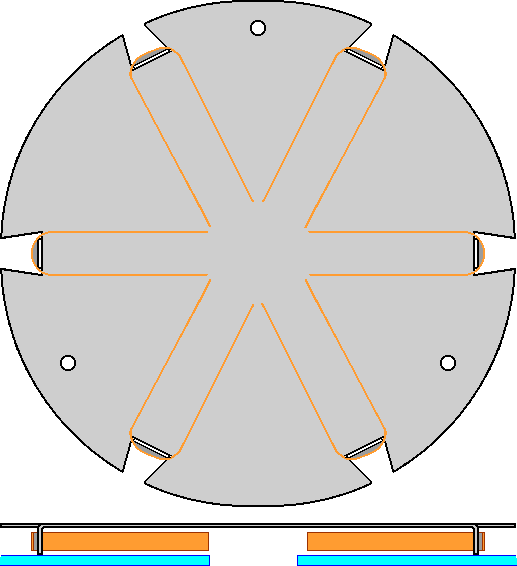|
This type of escape was marketed by 'Yorkshire Apiaries', they were originally
developed for use with, single pane,
glass crown boards
to provide an escape function. Examples have been found with ten or
eight escape paths, but this version, with six, is due to John Cox.
It is 128 mm in diameter made from tinplate sheet. The
six tabs are bent at right angles and the phosphor bronze (or
beryllium copper) springs are soldered to the bent tabs. The springs
are 5 mm wide. No thickness is specified for the spring material,
but as the springs themselves are long the thickness can be about
twice as thick as a porter escape spring (say about 0.25 mm).
There is no opening as in use the device is placed on to
the glass sheet directly over the feed hole, with the tips of the
tabs resting on the glass. The bees enter around
the periphery, squeeze through the gaps between the spring tips and
exit through the hole in the glass.
Details of this escape were published in January 1973,
in BIBBA Leaflet No 12, titled 'Making Your Own Glass Quilt' by John
Mobley.
| 